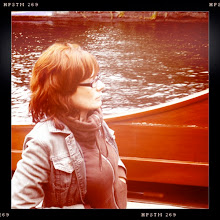Good Ideas and Geeky Metals
There is this great video by Steve Johnson and RSA Animate about where good ideas come from. This RSA Animation is similar to his TED Talk, but shorter and with lovely dry erase animation that really illustrates the points for all us right brain thinkers.In this video, Johnson talks about how good ideas come from a collision of hunches – when your ideas meet someone else's, and you, "allow those hunches to come together and turn into something bigger than the sum of their parts." In his longer TED talk he says, "More often than not, [great ideas] are cobbled together from whatever parts happen to be near by. We take ideas from other people, from people we've learned from, from people we run into in the coffee shop, and we stich them together into new forms and create something new." Colleges are a great for this, because there is a group of people thinking through similar problems which creates a "collision of hunches." But what do you do when you are out of college and working alone in your own studio?
One solution to that problem was Geeky Metals. Geeky Metals is a crit group for metalsmiths in Seattle, WA. Started by Dixie Darling and Stephanie Tomczak in 2008, when they thought it would be great to be able to have critiques like they did in college. For the first year it was just the two of them, Trudee Hill, Sarah Loertscher and myself. The meetings were infrequent and sometimes no one would show up to them at all. But Dixie was persistent and the driving force behind it, and now there are at least 40 Seattle metalsmiths that are involved to some extent or another. We meet for regular crits and informal social events. These have been, great opportunities to bounce ideas off each other, get inspired, or as Johnson puts it, "engines of creativity."
Existing in a post-modernist mindset, we believe that we need to be constantly coming up with new and original ideas that we came to entirely on our own, but is this a falsehood? Are there new original ideas that stand on their own, or do good ideas, as Johnson suggest, come from crowds or networks and develop over time?







